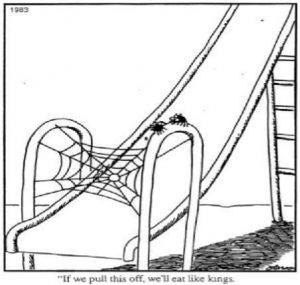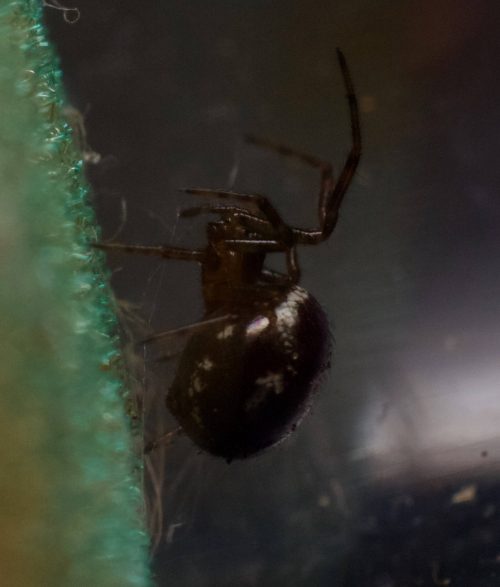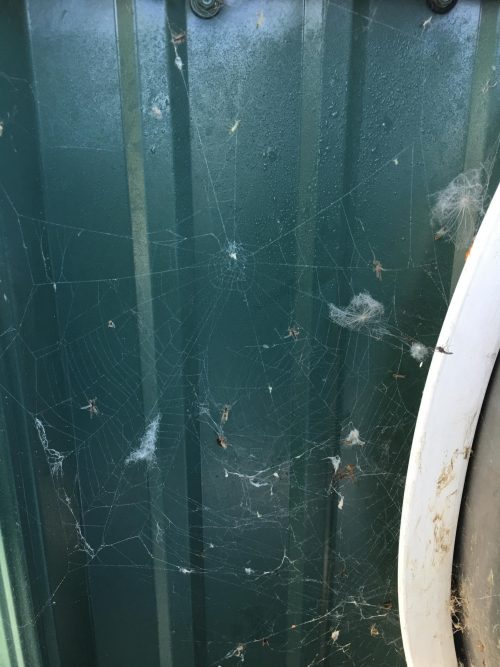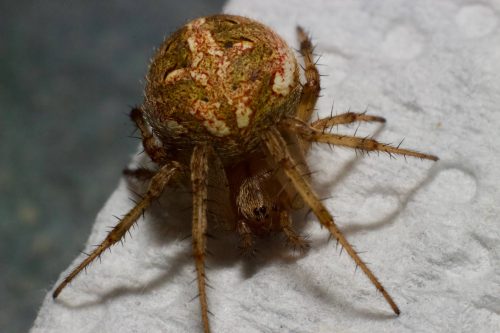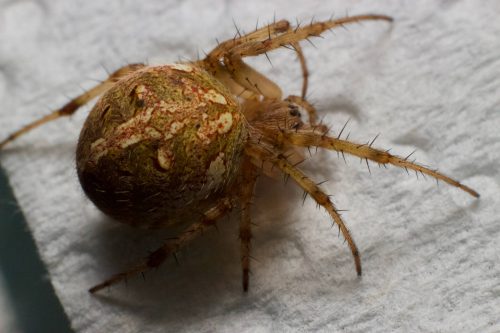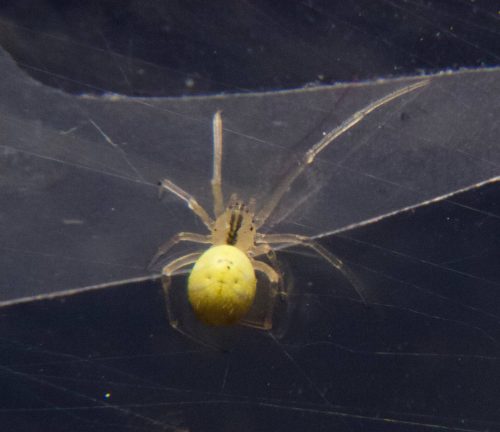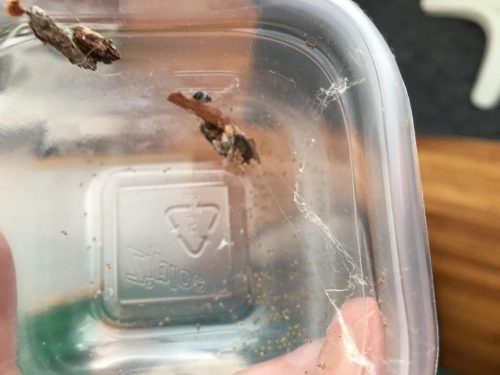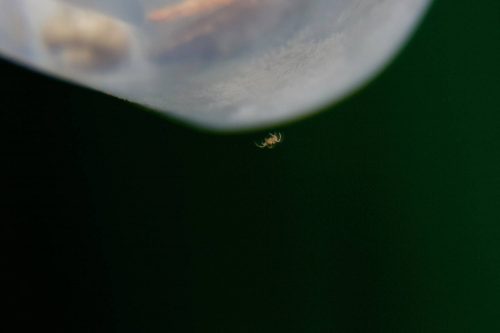The cartoon is a lie. We’ve been to many playgrounds looking for spiders, and there is a consistent pattern. If you visit a neglected park, like Dogpoop Park that we visited yesterday, you’ll find lots of webs dangling everywhere under the equipment (whether the owner is at home at the time is a different question). Go to a park heavily trafficked in children, and the place is bare of spiders and their webs. I’m pretty sure children eat spiders and pretend cobwebs are cotton candy.
So this morning Mary and I visited Eastside Park, which is probably the most popular park in town. There are picnic tables everywhere, a large shelter, a band shell, and two playground areas with slides and swings and all that good stuff. One thing it doesn’t have is a lot of spiders.
I mean, seriously, what is the point?
We did have some success prowling about the band shell, which has complex siding with many crevices to hide in, and we found a few spiders cowering there. I think they’re terrified of carnivorous children. There were mainly Theridiidae lurking about, and curiously, they were uniformly Steatoda borealis, the Boreal Combfoot. They are pretty false widows. I like the mottled pattern on my friends, Parasteatoda, but the boreals are also nice, with solid dark black to reddish purple body and an elegant white band on the front of their abdomen.
So not a total waste of time. It would be a much more interesting hunting ground if we could get rid of the roving bands of kids. That park is full of pernicious children every time I pass by on a sunny day.

